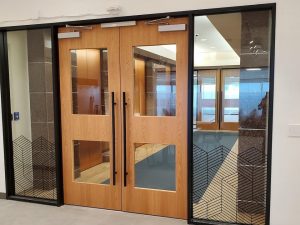Key Takeaways:
- Understanding the vital role of soldering in aerospace manufacturing.
- Exploring the specialized training required for precision soldering in aerospace applications.
- The importance of quality control and inspection in ensuring soldering excellence.
- Future trends and advancements in soldering technology for the aerospace industry.
Introduction
The aerospace industry demands the highest levels of precision and reliability in every component, from the most miniature circuitry to the most significant structural elements. As technology advances, the need for expert soldering in aerospace manufacturing has grown exponentially. Soldering, the process of joining two or more metals by melting and flowing a filler metal into the joint, is paramount in creating robust and reliable connections essential for aerospace applications. This article delves into the critical role of soldering in the aerospace industry, the specialized training required, the importance of quality control, and the future trends that will continue to shape this field.
The Critical Role Of Soldering In Aerospace
Soldering plays a vital role in the aerospace industry by ensuring the integrity and functionality of electronic components, which are crucial for the operation of aircraft and spacecraft. The meticulous process of soldering involves several steps, including preparation, application, and inspection. In aerospace, these steps must be executed with unparalleled precision. The joints made through soldering must withstand extreme temperatures, vibrations, and other harsh conditions typical in aviation and space environments.
Soldered joints are found in flight control systems, navigation instruments, communication devices, and other critical aerospace equipment. Poor soldering can lead to equipment failure, which could have catastrophic consequences. Therefore, achieving excellence in soldering is non-negotiable in this high-stakes industry. The components used in aerospace applications often require soldering expertise to handle specific materials and techniques, making the role of skilled technicians indispensable.
Specialized Soldering Training For Aerospace Precision
The complexity and critical nature of aerospace applications necessitate specialized soldering training. Technicians must be adept in various soldering techniques, including through-hole, surface mount, and wire harness assembly. Training programs are designed to equip technicians with the skills needed to perform consistent and flawless soldering, ensuring the highest levels of reliability and safety.
Training often includes theoretical and practical components, covering the properties of different metals, the behavior of solders, flux application, temperature control, and proper inspection methods. Intensive hands-on sessions allow trainees to apply what they’ve learned in real-world scenarios, ensuring they are well-prepared to meet the demands of the aerospace industry. Certification from reputable institutions often validates the technician’s proficiency, reassuring employers of their capability to handle critical tasks.
This rigorous training is essential because even minor imperfections in soldering can lead to significant failures. For example, a cold solder joint, where the solder does not properly flow to form a reliable connection, can cause intermittent electrical issues. Therefore, specialized training ensures that technicians can identify and rectify such problems, contributing to aerospace technology’s overall safety and efficiency.
The Importance Of Quality Control & Inspection
In the aerospace industry, quality control and meticulous inspection processes are critical in ensuring the reliability of soldered joints. Rigorous testing methods are employed to detect any potential flaws in the soldering process. Techniques such as X-ray inspection, thermal imaging, and automated optical inspection (AOI) are commonly used to verify the integrity of soldered connections.
Quality control begins with the selection of materials. High-quality solder and flux are essential in achieving robust and durable joints. The soldering process must be controlled to avoid contamination that could compromise the joint’s integrity. Post-soldering inspections involve checking for common defects such as voids, cracks, and insufficient solder coverage.
Automated systems have become increasingly vital in the quality control process. These systems can inspect solder joints much faster and more accurately than manual inspection. They are programmed to detect defects that may not be visible to the naked eye, ensuring that every solder joint meets stringent aerospace standards. Moreover, continuous improvement processes, including feedback loops and regular audits, help maintain and enhance soldering quality over time.
Future Trends In Aerospace Soldering
As technology continues to evolve, the field of aerospace soldering is expected to see significant advancements. One notable trend is the increased use of automation and robotics in soldering. Automated soldering systems offer greater precision, repeatability, and efficiency, reducing the risk of human error. These systems can be programmed to handle complex soldering tasks, making them ideal for high-volume production environments.
Another emerging trend is the development of new solder materials designed to withstand the extreme conditions encountered in aerospace applications. Researchers are exploring advanced solder alloys that offer superior thermal and mechanical properties, ensuring robust and reliable connections. These new materials will likely play a crucial role in the next generation of aerospace technology, enabling the development of more advanced and resilient systems.
Additionally, integrating artificial intelligence (AI) and machine learning into the soldering process is poised to revolutionize the industry. AI algorithms can analyze vast amounts of data from soldering operations, identifying patterns and predicting potential issues before they occur. This predictive capability allows for proactive maintenance and optimization, ensuring continuous soldering quality and efficiency improvement.
Further advancements in inspection technology, such as real-time monitoring and in-line inspection systems, will enhance the ability to detect and address defects promptly. These innovations will contribute to higher product reliability and safety, meeting the stringent requirements of the aerospace industry. As these trends unfold, they will undoubtedly shape the future of aerospace soldering, driving progress and innovation in this critical field.
Conclusion
Soldering expertise is indispensable in the aerospace industry, playing a crucial role in ensuring the reliability and safety of aerospace components. The stringent requirements of aerospace applications demand specialized training, rigorous quality control, and continuous technological advancements. As the industry evolves, automation, new materials, and AI will undoubtedly drive further improvements in soldering processes.
Meeting the high demands of aerospace precision requires a commitment to excellence, from skilled technicians to innovative technologies. By embracing these advancements and maintaining stringent standards, the aerospace industry can continue to achieve new heights in safety, efficiency, and reliability. Ultimately, the expertise in soldering will remain a cornerstone of aerospace manufacturing, supporting the development of cutting-edge technologies that shape the future of aviation and space exploration.






Leave a Reply